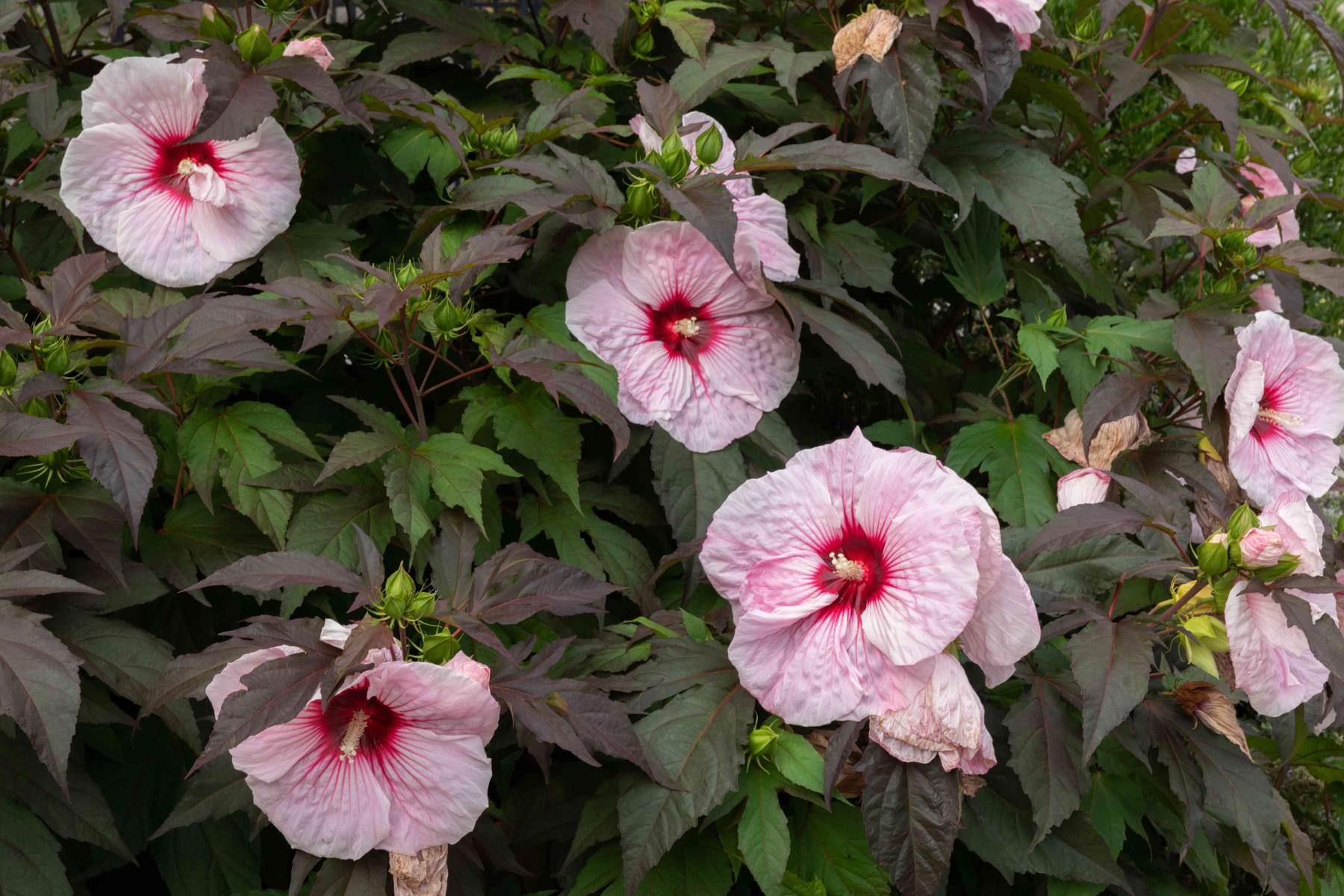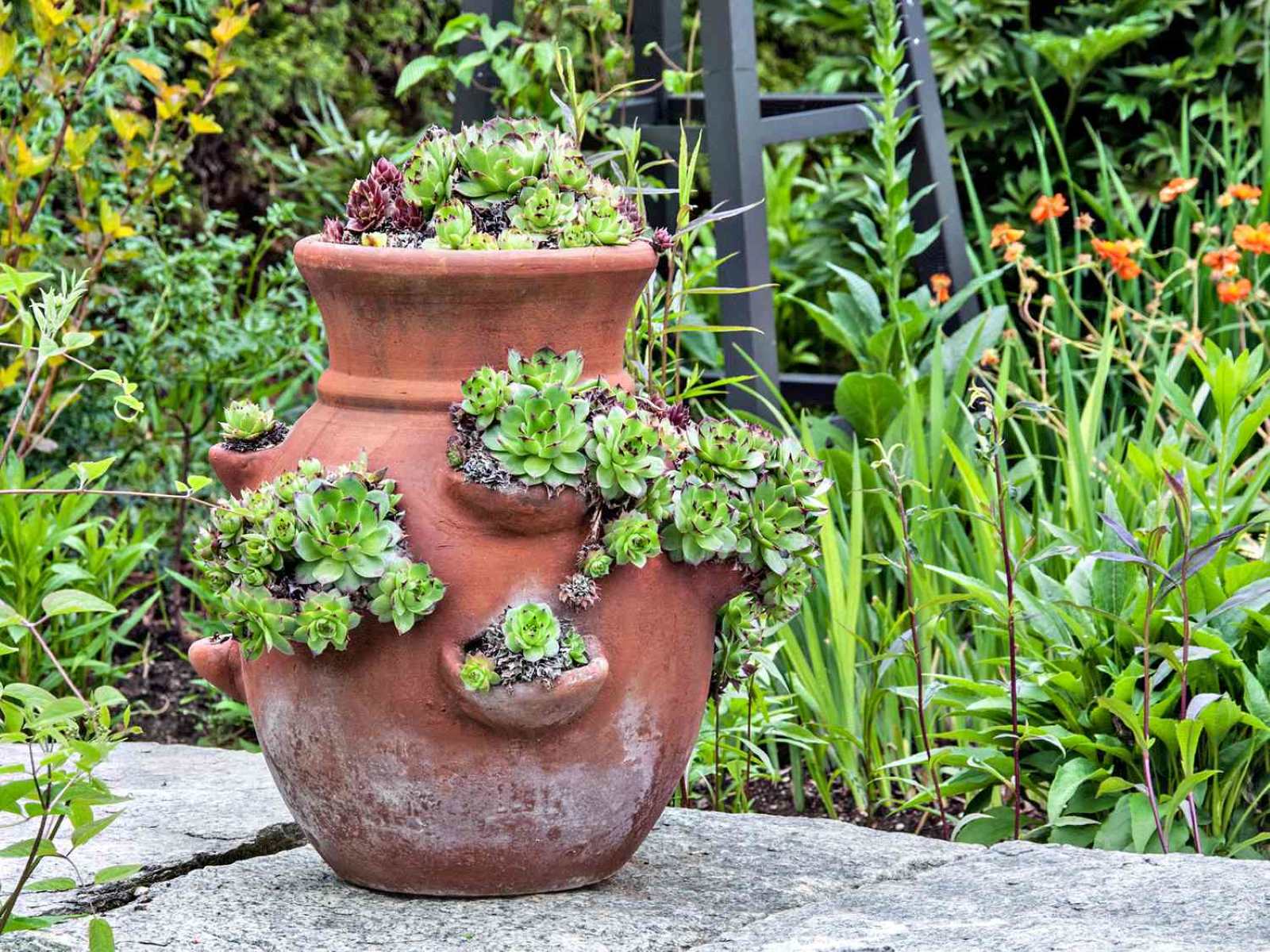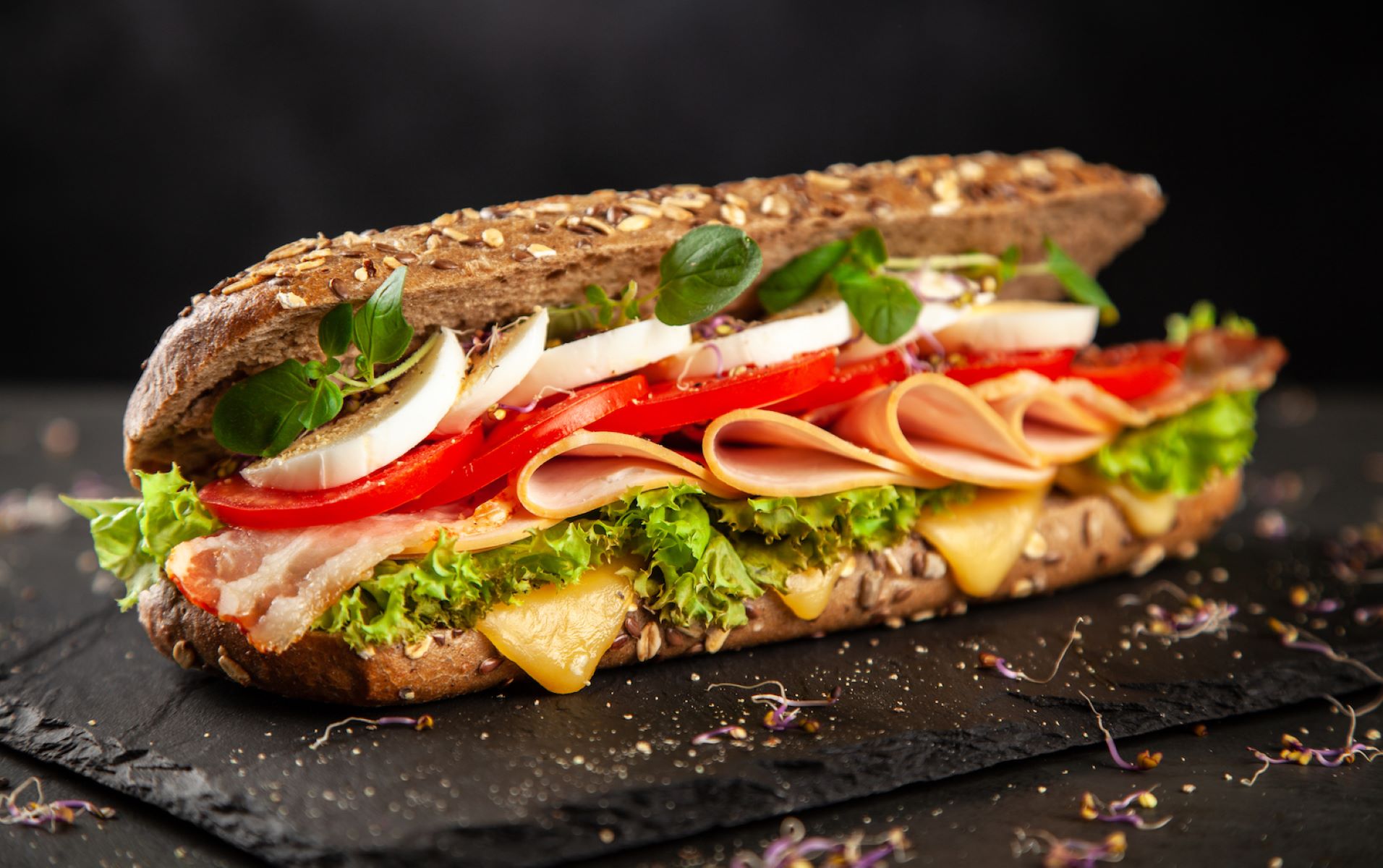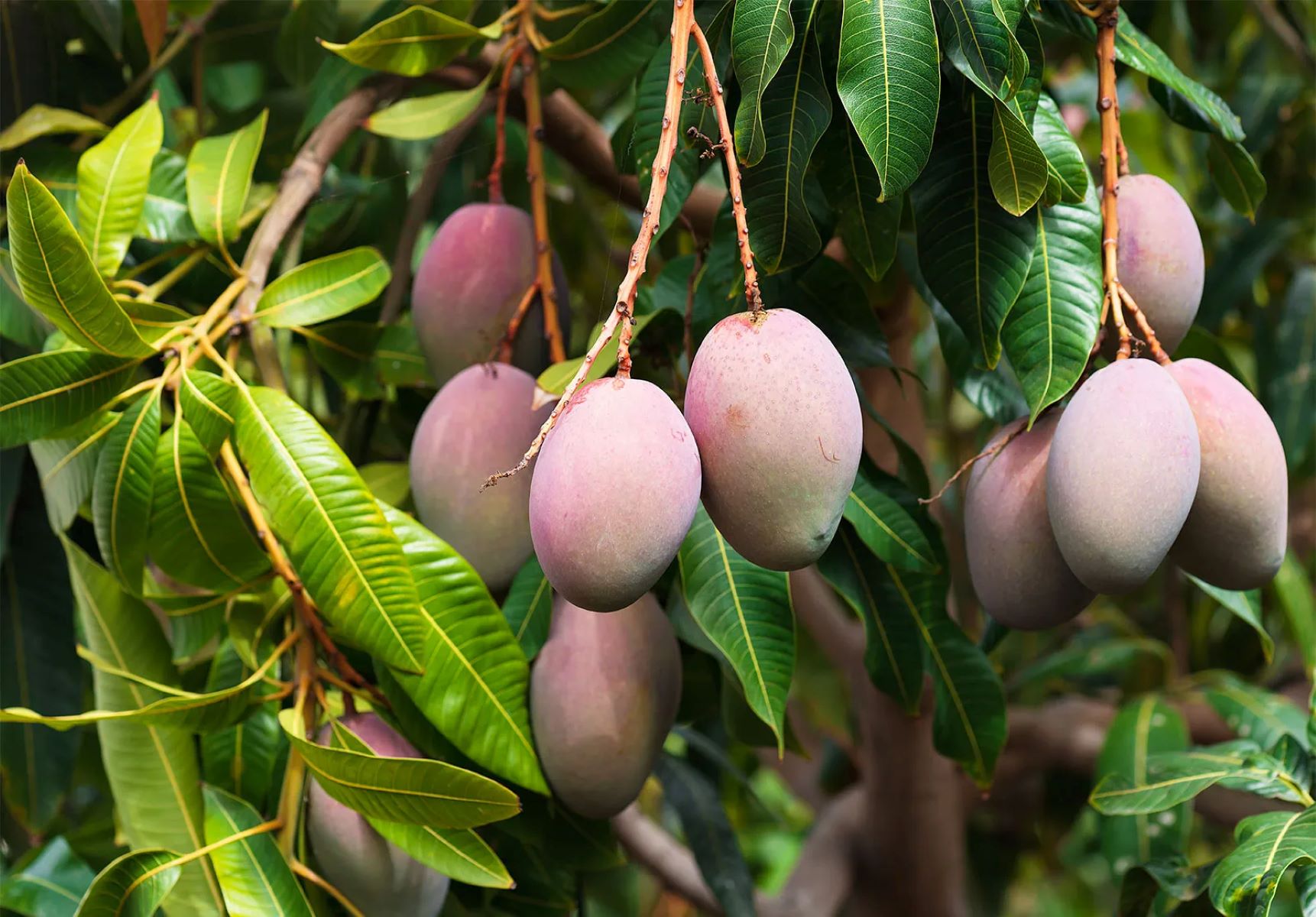Home>Lifestyle>The Ultimate Guide To Growing Hardy Hibiscus In NYC: Watering, Fertilizing, And Pruning Tips Revealed!


Lifestyle
The Ultimate Guide To Growing Hardy Hibiscus In NYC: Watering, Fertilizing, And Pruning Tips Revealed!
Published: February 12, 2024
Discover the ultimate guide to growing hardy hibiscus in NYC, including expert tips on watering, fertilizing, and pruning. Enhance your lifestyle with thriving hibiscus plants!
(Many of the links in this article redirect to a specific reviewed product. Your purchase of these products through affiliate links helps to generate commission for Regretless.com, at no extra cost. Learn more)
Table of Contents
Introduction
Welcome to the ultimate guide to growing hardy hibiscus in New York City! Whether you're a seasoned gardener or just starting to explore the world of horticulture, this comprehensive guide will equip you with the knowledge and techniques needed to cultivate vibrant and thriving hardy hibiscus plants in the unique climate of NYC.
In this guide, we will delve into the intricacies of nurturing hardy hibiscus, a stunning and resilient flowering plant known for its large, showy blossoms and lush foliage. As we journey through the various aspects of growing hardy hibiscus, you will gain insights into selecting the right variety for the city's environment, mastering essential care practices such as watering, fertilizing, and pruning, and safeguarding your plants against common pests and diseases.
Whether you're aiming to adorn your urban garden, balcony, or rooftop with the captivating beauty of hardy hibiscus, this guide is your go-to resource for unlocking the secrets to successful cultivation in the bustling metropolis of New York City. So, let's embark on this horticultural adventure together and discover the art of nurturing hardy hibiscus amidst the urban landscape of NYC!
Read more: The Ultimate Guide To Growing Orbeez
Understanding Hardy Hibiscus
Hardy hibiscus, scientifically known as Hibiscus moscheutos, is a perennial flowering plant renowned for its spectacular blooms and robust nature. Unlike its tropical counterpart, the hardy hibiscus is well-suited to thrive in the diverse climate of New York City, making it a popular choice for local gardeners seeking to add a touch of exotic allure to their outdoor spaces.
Characteristics
Characterized by its striking, dinner plate-sized flowers that can span up to 12 inches in diameter, hardy hibiscus varieties showcase an array of vibrant hues, including shades of pink, red, white, and even bi-color combinations. The plant's foliage is equally captivating, featuring large, deep green leaves that provide an attractive backdrop to the resplendent blossoms.
Adaptability
One of the most appealing traits of hardy hibiscus is its adaptability to a wide range of growing conditions. From sunny garden beds to containers on city balconies, these resilient plants can thrive in various settings, making them an ideal choice for urban gardeners with limited space.
Climate Tolerance
In the context of New York City's climate, hardy hibiscus demonstrates remarkable resilience, withstanding both the sweltering heat of summer and the chilly temperatures of winter. This adaptability makes it well-suited for the city's fluctuating weather patterns, ensuring that it can flourish throughout the seasons.
Growth Habit
Hardy hibiscus typically grows into sizable, bushy plants, reaching heights of 3 to 8 feet, depending on the variety. Its robust growth habit and impressive floral display make it a standout feature in any garden or landscape, adding a touch of tropical grandeur to the urban environment.
Wildlife Attraction
Beyond its aesthetic appeal, hardy hibiscus also serves as a magnet for pollinators, such as butterflies and hummingbirds, enhancing the ecological diversity of urban green spaces. Its nectar-rich blooms provide a vital food source for these charming visitors, contributing to the overall vitality of the local ecosystem.
In essence, understanding the unique characteristics and adaptive nature of hardy hibiscus sets the stage for successful cultivation in the dynamic urban landscape of New York City. With this foundational knowledge in hand, you are well-prepared to embark on the rewarding journey of nurturing these captivating plants amidst the bustling metropolis.
Choosing the Right Variety for NYC
When it comes to selecting the ideal variety of hardy hibiscus for cultivation in New York City, several factors come into play to ensure the plant's successful adaptation to the urban environment. Considering the unique climate, space limitations, and aesthetic preferences of NYC gardeners, choosing the right variety is crucial for achieving thriving hibiscus displays. Here are some key considerations to guide you in making the perfect selection:
Climate Compatibility
Given the fluctuating climate of New York City, it is essential to choose hardy hibiscus varieties that exhibit exceptional tolerance to a wide range of temperatures. Look for cultivars known for their resilience in both heat and cold, as they will fare well in the city's dynamic weather conditions. Varieties such as 'Lord Baltimore' and 'Disco Belle' are renowned for their ability to thrive in the diverse climate of NYC, making them popular choices among local gardeners.
Size and Space
For urban gardeners with limited outdoor space, compact and manageable varieties of hardy hibiscus are highly desirable. Look for cultivars that offer a balance between impressive floral displays and a more restrained growth habit, making them suitable for container gardening or small garden beds. Varieties like 'Summer in Paradise' and 'Starry Starry Night' are well-suited for NYC's urban landscape, boasting stunning blooms while maintaining a more compact form that fits seamlessly into city gardens and balconies.
Flower Color and Form
The aesthetic appeal of hardy hibiscus lies in its captivating blooms, which come in an array of colors and patterns. When selecting a variety for NYC, consider the visual impact you wish to achieve in your outdoor space. Whether you prefer bold, vibrant hues or delicate bi-color patterns, there is a wide selection of hardy hibiscus varieties to cater to diverse aesthetic preferences. Varieties such as 'Cranberry Crush' and 'Vintage Wine' offer rich, deep-colored blooms, while 'Perfect Storm' showcases striking bi-colored petals, allowing NYC gardeners to curate visually stunning displays in their urban oases.
By carefully considering these factors and exploring the diverse range of hardy hibiscus varieties available, NYC gardeners can make informed choices that align with the unique characteristics of the urban environment. Selecting the right variety sets the stage for a flourishing hibiscus garden, enriching the cityscape with vibrant colors and lush foliage, and offering a delightful retreat amidst the bustling energy of New York City.
Planting Hardy Hibiscus in NYC
Planting hardy hibiscus in the dynamic urban landscape of New York City requires careful consideration of the plant's needs and the city's distinct environmental factors. Whether you are creating a garden oasis in a small urban space or enhancing the greenery of a larger outdoor area, the process of planting hardy hibiscus involves several key steps to ensure the successful establishment and growth of these captivating flowering plants.
Site Selection
The first step in planting hardy hibiscus is selecting an optimal site that provides the necessary conditions for their flourishing. In NYC, it is crucial to identify a location that receives ample sunlight, as hardy hibiscus thrives in full sun exposure. Look for areas in your garden or outdoor space that receive at least 6 to 8 hours of direct sunlight daily, ensuring that the plants can harness the energy they need for robust growth and abundant blooming.
Soil Preparation
Preparing the soil is a critical aspect of planting hardy hibiscus, as it directly influences the plant's ability to establish strong roots and access essential nutrients. In NYC, where urban gardening often involves container or raised bed cultivation, it is advisable to use a well-draining, nutrient-rich potting mix or amend the existing soil with organic matter to enhance its fertility and structure. This creates an optimal growing medium for hardy hibiscus, promoting healthy root development and overall plant vigor.
Planting Technique
When it comes to actually planting hardy hibiscus, the technique can significantly impact the plant's initial establishment and long-term growth. Whether you are transplanting container-grown specimens or installing bare-root plants, it is essential to dig planting holes that are spacious enough to accommodate the root system and provide room for future expansion. Ensure that the plants are positioned at the same depth as they were in their original containers or nursery pots, allowing the soil line to align with the base of the stems.
Watering and Mulching
Following the planting process, it is crucial to provide adequate moisture to newly installed hardy hibiscus plants, particularly during the initial establishment period. In NYC, where summer temperatures can soar, regular watering is essential to support the plants' hydration needs and mitigate the effects of urban heat. Applying a layer of organic mulch around the base of the plants helps conserve soil moisture, suppresses weed growth, and insulates the root zone, creating a conducive environment for healthy hibiscus growth.
By adhering to these planting guidelines and techniques, NYC gardeners can lay the foundation for thriving hardy hibiscus displays, infusing their urban outdoor spaces with the captivating beauty and lush foliage of these resilient flowering plants. With careful site selection, soil preparation, and attentive care, the process of planting hardy hibiscus becomes a rewarding endeavor, contributing to the vibrant greenery and natural charm of New York City's diverse urban landscape.
Watering Tips for Hardy Hibiscus in NYC
Proper watering is a fundamental aspect of nurturing hardy hibiscus in the bustling urban environment of New York City. With its unique climate and varying weather patterns, NYC presents specific challenges and considerations when it comes to maintaining optimal soil moisture for these resilient flowering plants. By adhering to the following watering tips, NYC gardeners can ensure the health and vitality of their hardy hibiscus displays, fostering lush foliage and abundant blooms throughout the growing season.
1. Consistent Moisture
Consistency is key when it comes to watering hardy hibiscus in NYC. While these plants are adaptable and resilient, they thrive best in soil that maintains a consistent level of moisture, especially during the hot and dry periods of the summer months. It is essential to monitor the soil moisture regularly and provide supplemental watering as needed to prevent the soil from drying out excessively, particularly in urban environments where heat retention and soil evaporation rates may be elevated.
2. Deep Watering
When watering hardy hibiscus, it is beneficial to ensure deep penetration of moisture into the root zone. Rather than shallow, frequent watering, which can lead to surface-root development and reduced drought tolerance, aim to deliver a thorough soaking that reaches the deeper layers of the soil. This encourages the development of a robust root system and enhances the plant's ability to withstand periods of heat and dryness, a particularly important consideration in the urban setting of NYC.
3. Morning Watering
In the context of New York City's climate, where summer temperatures can soar and humidity levels fluctuate, it is advantageous to water hardy hibiscus in the morning. This timing allows the plants to uptake moisture effectively, replenishing their hydration reserves before the heat of the day sets in. Morning watering also reduces the risk of prolonged foliage moisture, minimizing the potential for fungal diseases and promoting overall plant health in the dynamic urban environment.
4. Mulch for Moisture Retention
Applying a layer of organic mulch around the base of hardy hibiscus plants serves as a valuable strategy for moisture retention in NYC gardens. Mulch helps conserve soil moisture, reduces water loss through evaporation, and insulates the root zone, creating a more stable and moisture-retentive environment for the plants. In the urban context, where temperature fluctuations and soil compaction can impact moisture levels, mulching provides an effective means of supporting the water needs of hardy hibiscus.
5. Rainwater Utilization
Given the prevalence of impervious surfaces in urban landscapes, such as rooftops and paved areas, NYC gardeners can harness rainwater as a sustainable and eco-friendly resource for watering hardy hibiscus. Implementing rain barrels or collecting runoff from downspouts allows for the capture and utilization of rainwater, reducing reliance on municipal water sources and contributing to the conservation of this valuable natural resource. Rainwater is also free of the additives found in tap water, making it an excellent choice for nourishing hardy hibiscus plants in the city.
By incorporating these watering tips into their horticultural practices, NYC gardeners can optimize the moisture management of hardy hibiscus, promoting robust growth, vibrant blooms, and overall plant resilience in the dynamic urban landscape. With a mindful approach to watering, urban gardeners can cultivate thriving displays of hardy hibiscus, enhancing the natural beauty and allure of New York City's diverse outdoor spaces.
Fertilizing Hardy Hibiscus in NYC
Fertilizing hardy hibiscus in the dynamic urban environment of New York City plays a pivotal role in sustaining the plant's vigor, promoting lush foliage, and enhancing the production of spectacular blooms. With the city's distinct climate and growing conditions, it is essential for NYC gardeners to adopt a targeted approach to fertilization, providing the necessary nutrients to support the robust growth and resilience of hardy hibiscus throughout the growing season.
Soil Analysis and Nutrient Requirements
Before embarking on a fertilization regimen, conducting a soil analysis is a valuable initial step for NYC gardeners aiming to optimize the nutrient balance for hardy hibiscus. Soil testing provides insights into the pH levels, existing nutrient content, and overall soil composition, guiding the selection of appropriate fertilizers and application rates tailored to the specific needs of the plants. In the context of New York City's urban landscape, where soil conditions may vary, a thorough understanding of the nutrient requirements of hardy hibiscus is crucial for achieving optimal growth and blooming performance.
Balanced Fertilizer Selection
When choosing fertilizers for hardy hibiscus in NYC, it is advisable to opt for a balanced, slow-release formulation that provides a steady supply of essential nutrients over an extended period. A complete, granular fertilizer with a balanced NPK (nitrogen, phosphorus, and potassium) ratio, supplemented with micronutrients such as iron and magnesium, can effectively meet the nutritional needs of hardy hibiscus plants in the urban environment. Selecting a fertilizer specifically formulated for flowering plants ensures that the unique requirements of hardy hibiscus, particularly their blooming and foliage development, are adequately addressed.
Application Timing and Frequency
In the context of New York City's climate and growing season, strategic timing and frequency of fertilizer application are key considerations for supporting the health and vitality of hardy hibiscus. A general guideline is to apply fertilizer in early spring as new growth emerges, followed by subsequent applications every 6 to 8 weeks throughout the active growing period. This approach aligns with the plant's heightened nutrient demands during periods of vigorous growth and flowering, ensuring that they receive a consistent supply of essential nutrients to thrive in the urban environment.
Application Technique and Considerations
When applying fertilizer to hardy hibiscus in NYC, it is important to distribute the product evenly around the root zone, avoiding direct contact with the stems or foliage. Lightly incorporating the fertilizer into the soil surface and watering thoroughly afterward facilitates the gradual release and uptake of nutrients by the plants, promoting efficient utilization and minimizing the risk of nutrient leaching in the urban setting. Additionally, adjusting the fertilizer application rates based on the results of the soil analysis and the observed growth and blooming patterns of the hibiscus plants allows for a tailored and responsive approach to nutrient management in the dynamic urban landscape.
By embracing these best practices for fertilizing hardy hibiscus in New York City, urban gardeners can empower their plants with the essential nutrients needed to thrive amidst the urban environment. With a strategic and informed approach to fertilization, NYC gardeners can cultivate robust, vibrant displays of hardy hibiscus, adorning the city's outdoor spaces with the resplendent beauty and enduring allure of these captivating flowering plants.
Pruning and Maintenance for Hardy Hibiscus in NYC
Pruning and maintenance are essential components of nurturing hardy hibiscus in the vibrant urban landscape of New York City. These practices not only contribute to the overall health and aesthetic appeal of the plants but also play a crucial role in managing their growth, promoting flowering, and mitigating potential issues. With the unique climate and growing conditions of NYC in mind, employing strategic pruning and maintenance techniques is key to ensuring the long-term vitality and beauty of hardy hibiscus displays in urban gardens and outdoor spaces.
Pruning Techniques
Pruning hardy hibiscus in NYC involves a combination of seasonal maintenance and targeted interventions to optimize the plants' growth and blooming potential. In late winter or early spring, when new growth begins to emerge, it is beneficial to engage in rejuvenation pruning, which entails cutting back the previous season's growth to encourage vigorous new shoots and abundant flowering. This practice rejuvenates the plants, stimulates fresh growth, and prevents them from becoming woody and unmanageable over time.
Additionally, selective pruning throughout the growing season can help shape the plants, remove dead or damaged stems, and encourage branching, resulting in a more compact and visually appealing growth habit. By selectively removing spent flowers and trimming back overly long or wayward stems, NYC gardeners can maintain the desired form and structure of their hardy hibiscus displays, creating a tidy and well-manicured appearance in urban outdoor settings.
Maintenance Practices
In addition to pruning, ongoing maintenance tasks are integral to the care of hardy hibiscus in the dynamic urban environment of NYC. Regular inspection for pests, such as aphids or whiteflies, and the early detection of any signs of disease or stress enable proactive intervention to safeguard the plants' health. By promptly addressing any issues that may arise, such as discoloration of leaves or unusual growth patterns, NYC gardeners can prevent the escalation of problems and maintain the resilience of their hardy hibiscus displays.
Furthermore, providing adequate support, such as staking or gentle tying, for tall or top-heavy stems can prevent breakage and ensure the stability of the plants, particularly in exposed urban settings where wind and inclement weather may pose challenges. This proactive approach to maintenance safeguards the structural integrity of hardy hibiscus, preserving their ornamental value and minimizing the risk of damage in the urban landscape of New York City.
By integrating these pruning and maintenance practices into their horticultural routines, NYC gardeners can nurture thriving displays of hardy hibiscus, elevating the natural beauty and allure of the city's outdoor spaces. Through strategic pruning, attentive maintenance, and a dedication to the long-term well-being of their plants, urban gardeners can cultivate vibrant and resilient showcases of hardy hibiscus, enriching the urban environment with the captivating charm and enduring elegance of these remarkable flowering plants.
Common Pests and Diseases
In the bustling urban landscape of New York City, hardy hibiscus, despite its resilience, may encounter various pests and diseases that can impact its health and vitality. Being aware of these potential challenges and adopting proactive measures to address them is essential for maintaining thriving hibiscus displays in the city's diverse outdoor spaces.
Common Pests
-
Aphids: These small, sap-sucking insects can infest the tender new growth of hardy hibiscus, causing distortion of leaves and the secretion of sticky honeydew. Regular inspection and the use of insecticidal soaps can help manage aphid populations and prevent damage to the plants.
-
Whiteflies: These tiny, winged pests can congregate on the undersides of hibiscus leaves, feeding on plant sap and potentially transmitting viral diseases. Introducing natural predators, such as ladybugs, or using horticultural oils can aid in controlling whitefly infestations and minimizing their impact on the plants.
-
Japanese Beetles: These voracious feeders can skeletonize hibiscus leaves and severely compromise the plant's aesthetic appeal. Handpicking the beetles or employing organic insecticides can help mitigate their presence and protect the foliage from extensive damage.
Common Diseases
-
Powdery Mildew: In the humid and fluctuating climate of NYC, hardy hibiscus may be susceptible to powdery mildew, a fungal disease that manifests as a powdery white coating on the leaves. Improving air circulation, avoiding overhead watering, and applying fungicidal treatments can help manage and prevent powdery mildew infestations.
-
Leaf Spot: This fungal disease can cause dark, irregular spots on hibiscus leaves, leading to defoliation and reduced plant vigor. Pruning affected foliage, promoting proper drainage, and using fungicidal sprays can aid in minimizing the impact of leaf spot and preserving the overall health of the plants.
-
Root Rot: Excessive moisture and poorly drained soil can create favorable conditions for root rot, a fungal disease that affects the roots of hardy hibiscus, leading to wilting and decline. Ensuring well-draining soil, practicing moderate watering, and avoiding waterlogged conditions can help prevent the onset of root rot and maintain the plant's root health.
By remaining vigilant and implementing integrated pest management strategies, NYC gardeners can protect their hardy hibiscus from common pests and diseases, preserving their natural beauty and promoting their resilience in the dynamic urban environment. Through proactive monitoring and targeted interventions, urban hibiscus displays can flourish, enriching the cityscape with vibrant colors and lush foliage.
Conclusion
In conclusion, the cultivation of hardy hibiscus in the unique urban landscape of New York City presents a rewarding horticultural endeavor, offering a myriad of opportunities to infuse the city's outdoor spaces with the resplendent beauty and enduring allure of these remarkable flowering plants. By delving into the intricacies of nurturing hardy hibiscus amidst the bustling metropolis, NYC gardeners can unlock the secrets to successful cultivation, fostering vibrant displays of lush foliage and captivating blooms.
Throughout this comprehensive guide, we have explored the essential aspects of growing hardy hibiscus in NYC, from understanding the plant's characteristics and adaptive nature to selecting the right varieties tailored to the city's climate and space limitations. The process of planting, watering, fertilizing, and pruning hardy hibiscus has been elucidated, providing NYC gardeners with valuable insights and best practices for nurturing these resilient plants in the urban environment.
The significance of strategic watering techniques, targeted fertilization, and proactive pest and disease management has been underscored, equipping NYC gardeners with the knowledge and tools to promote the health and vitality of their hardy hibiscus displays. By integrating these practices into their horticultural routines, urban gardeners can cultivate thriving showcases of hardy hibiscus, enhancing the natural beauty and allure of New York City's diverse outdoor spaces.
As NYC gardeners embark on the journey of nurturing hardy hibiscus, it is essential to recognize the transformative impact of these captivating plants on the urban environment. From providing a haven for pollinators to adorning city gardens, balconies, and rooftops with their vibrant colors, hardy hibiscus enriches the fabric of urban greenery, contributing to the ecological diversity and visual splendor of the cityscape.
In essence, the cultivation of hardy hibiscus in New York City transcends the realm of horticulture, offering a gateway to connect with nature amidst the urban energy. Through the careful tending of these resilient plants, NYC gardeners can create enchanting retreats, vibrant oases, and captivating focal points within the bustling metropolis, fostering a harmonious coexistence of nature and urban life.
With the knowledge and insights garnered from this guide, NYC gardeners are poised to embark on a horticultural odyssey, cultivating thriving displays of hardy hibiscus that stand as testaments to the enduring allure and natural splendor of these remarkable flowering plants amidst the dynamic urban landscape of New York City.







